Most of the world’s magnificent black and white animals live in Africa. From penguins to zebra, the continent is packed with surreal monochrome species.
Okay, so the giant panda isn’t African. Nor is the white tiger. And the world’s black and white cows are the Belted Galloway and Friesian breeds from Europe. But Africa is the place where incredible black and white animals still live in the wild.
A list of white and black animals could also include a dalmatian dog. But that’s a captive animal selectively bred by people.
So while you can find monochrome animals across the world, it’s in Africa where you can truly distinguish their colour combination. Many animals blend in with their surroundings, but Africa’s black and white animals seem to stand out.
Why? The reasons are different for each animal on our list. In this article we explore Africa’s charming white and black animals, from the forests of Madagascar to the tip of the continent and the African savannah.
1. Jackass penguin
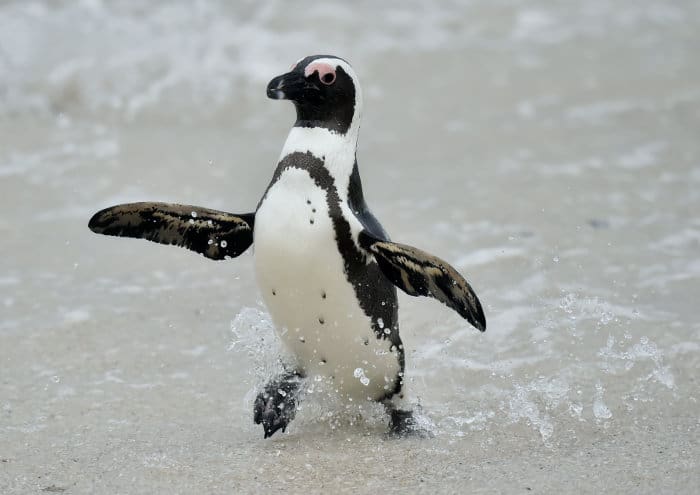
Penguins in Africa? Yep, penguins live in all the southern hemisphere continents. A huge colony of African penguins – previously known as “jackass penguins” – waddle across the golden sand of Boulders Beach, close to Cape Town.
Jackass are among the world’s smallest penguin species. While all penguins are black and white animals, African penguins have tuxedo style markings that give them an extra charm.
The most common argument for the colour is that penguins can camouflage themselves in the water. From above they blend into the dark blue ocean, which negates the threat from enormous birds of prey. Yet from underneath their white bellies blend into the blue sky, so they can more easily hunt prey.
Where to see jackass penguins in the wild? You can admire these white and black wonders on Boulders Beach, usually as part of a Cape of Good Hope guided tour.
Note that the main boardwalks can get very busy. Instead of using the main entrance, walk further along the beach (away from the car park) to a second gate. Enter here and you can share the beach with the penguins. Sometimes they waddle past as you are sunbathing.
2. Black-and-white colobus monkey
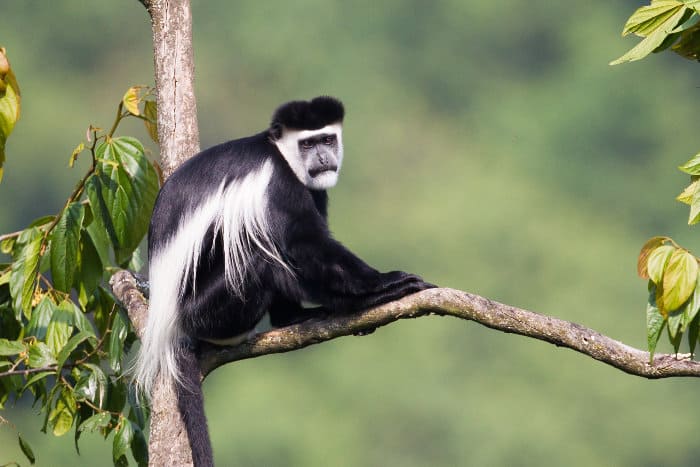
Don’t worry, we’re getting to the zebra soon. But here’s the most enchanting of all Africa’s monkeys species. Black-and-white colobus monkeys are probably the most laid-back animals on the entire continent.
They stick to the treetops, casually climbing from tree to tree, eating where they can while watching the world unfold below. With their long black and white tails and funky facial hair, these monkeys are a dazzling sight that completely contrast the green of their forest surroundings.
Colobus monkeys don’t need to camouflage as they mostly inhabit a treetop world away from predators. In comparison, vervet monkeys need to avoid the threat of lions and leopards who live on lower trees. So perhaps black and white is just to make them look good!
Where to see black-and-white colobus monkeys in the wild? 11 distinct species live in Africa’s forests. The easiest and most common to encounter is the Angolan black-and-white colobus, which now lives far beyond Angola.
What’s great about these black and white monkeys is that you don’t need to be on safari to see them in the wild. Many Kenyan and Tanzanian forests are home to these animals. You can see them when exploring Lake Naivasha, or even near Diani Beach.
3. Zebra
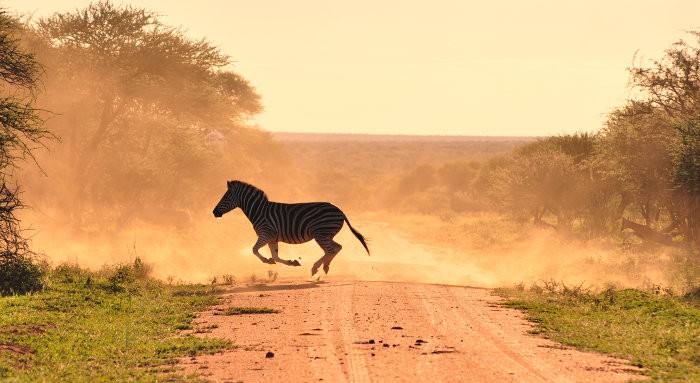
Ah, the wonderful zebra, a graceful animal galloping across the African savannah. But what’s with the black and white stripes?
It doesn’t seem like camouflage, certainly not against the dusty tones of African bush. But one recent theory suggests that black and white stripes are a form of nighttime camouflage against their nemesis – lions. Read all the zebra stripe theories in this article, such as a once popular idea that stripes prevent biting tsetse flies.
Their black and white stripes are completely unique, like human fingerprints. And these animals can recognise each other thanks to their stripes.
Where to see zebras in the wild? Zebra are one of the most common sights on any African safari, from Uganda to Swaziland to Malawi. They are omnipresent across the savannah, with the biggest population found in the Serengeti and Masai Mara.
It’s most common to see the black and white stripes of a plains zebra, also known as Burchell’s zebra. Just go on safari and it’s rare not to see a few of them. There’s also a mountain zebra and Grevy’s zebra, two endangered species with more tightly packed stripes.
4. Black-and-white ruffed lemur
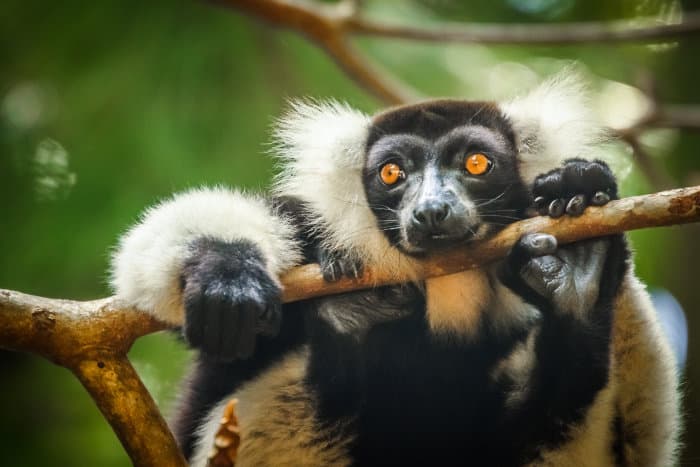
The largest of Madagascar’s lemur species is this bizarre black and white animal. Like all the other lemur species it’s endangered and now mostly confined to zoos and wildlife sanctuaries.
Cute white fur bushes out from around their ears, contrasting a jet black face. A long solid black tail is very different from the black and white ringed tail of the best known lemur, the smaller ring-tailed lemur.
Their monochrome colour does not provide camouflage in the green Madagascar jungles, and conservationists are unsure why they have developed such a strange colour.
Where to see black-and-white ruffed lemurs in the wild? Unfortunately this black and white animal is incredibly difficult to encounter in the wild. You will need to visit Madagascar on a wildlife safari, and go off the beaten track into the island’s dense interior.
5. Honey badger
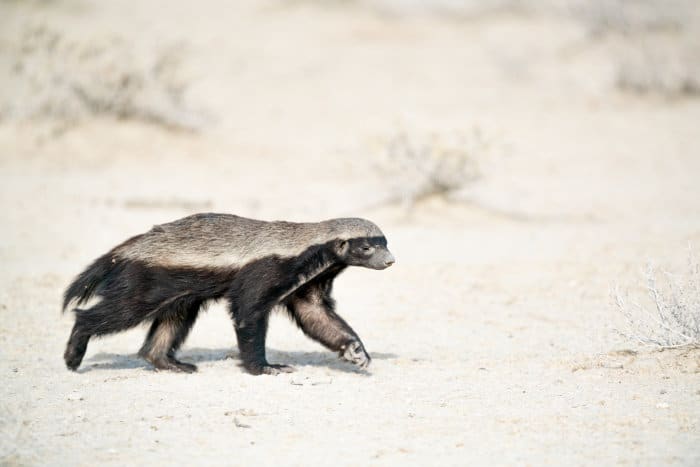
Perhaps the most surreal of all the black and white animals, honey badgers are fearless creatures who are grossly misunderstood. They are known to attack lions and have a reversible anus that sprays foul liquid at wannabe attackers!
However, they are not badgers, nor weasels or anything else. This fabulous creature animal is the only mellivora in the world. And its closest known relative is the wolverine!
Their black and white fur is a mystery, but there will be an evolutionary reason to the colour, even if we can’t yet guess what it is. Honey badgers have rubbery skin and can slip out of their skin when attacked, before twisting around to attack their predator. Read the complete honey badger story here.
Where to see honey badgers in the wild? Honey badgers can be encountered on African savannahs across eastern and southern Africa, from Etosha to Kruger to most parks in Tanzania. They are solitary animals and while widespread, uncommon to actually see.
Desert-like savannah will be your best opportunity, in places like Kgalagadi Transfrontier Park on the South Africa Botswana border, or Tsavo West.
6. Black rhino and white rhino
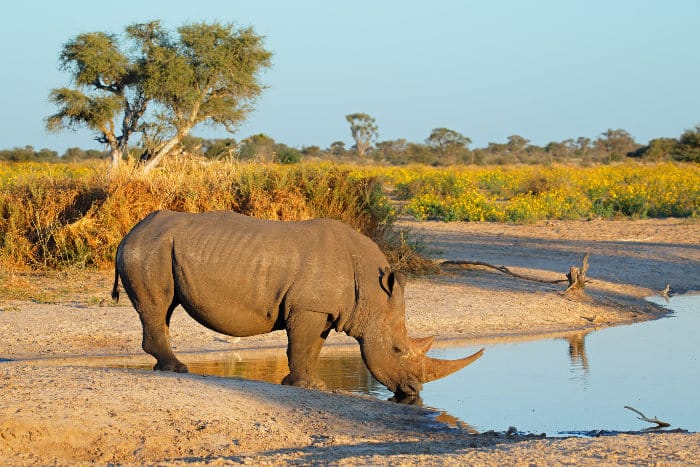
Africa has black and white rhinos, but neither of them are black or white, and certainly not black and white. Rhinos are grey in colour, so they don’t need a proper place on this list!
But if you do want to see both black and white rhinos in the same place, consider a safari on Kenya’s Laikipia Plateau, one of very few places where the species overlap in the wild.
6. Porcupine
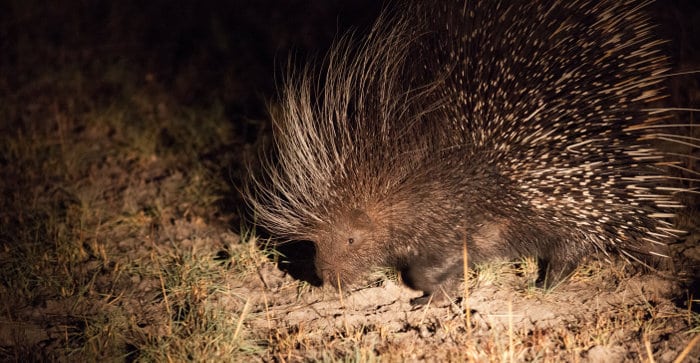
Delightful and distinctive, porcupines are slow rodents that love to eat salt. Their black and white pointy spikes are a great defence against predators, as well as becoming a fashion accessory to wear in your hair.
Porcupines are mostly black, but they do show fluffs of white hair and their quills are wonderfully black and white. Why? Nobody really knows!
Where to see porcupines in the wild? Kruger in South Africa is a good option, a huge national park home to the Cape or South African porcupine. You can find the crested porcupine in Ethiopia and Tanzania, a black and white animal known to collect animal bones it finds when foraging in the night.
7. Sable antelope

One of Africa’s largest and most elegant antelope species, sable antelopes have jet black fur with white underbellies and faces. Such striking features mean they instantly standout, so their colourings are not for camouflage.
These animals mostly live in woodland savannah. Underneath bright sunlight, their white stomachs counteract the shadow cast by their large backs. So sable antelope appear to only be one colour. They can essentially hide in their own shadow as they appear to be two-dimensional, rather than moving animals.
Where to see sable antelope in the wild? Sables are widespread across East and Southern Africa but they are not abundant. The most iconic place to see one is in Zimbabwe, where they are also the national animal.
More black and white animals in Africa?
Do you have a favourite black and white animal, in Africa or somewhere else? Tell us what we missed and we will add it to our list of fabulous monochrome animals!
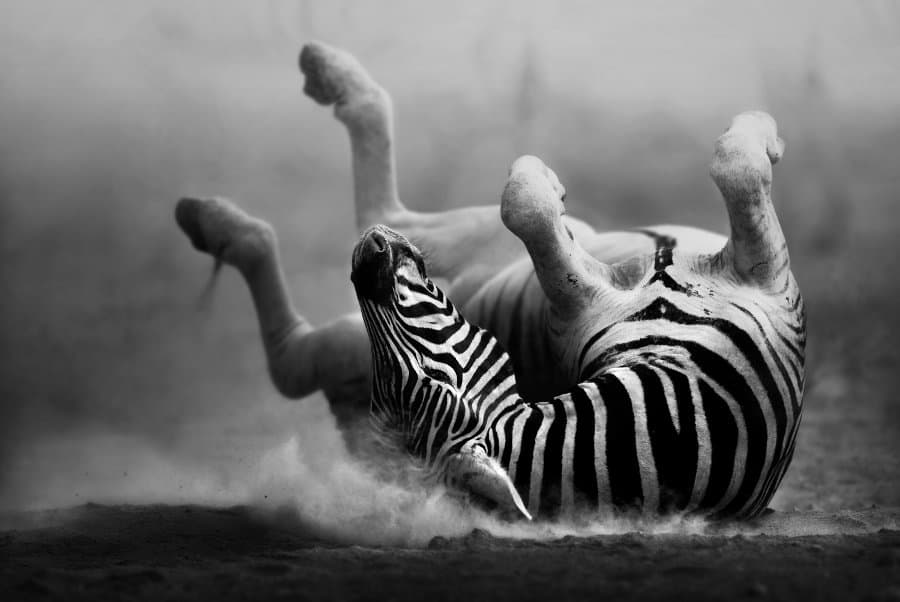
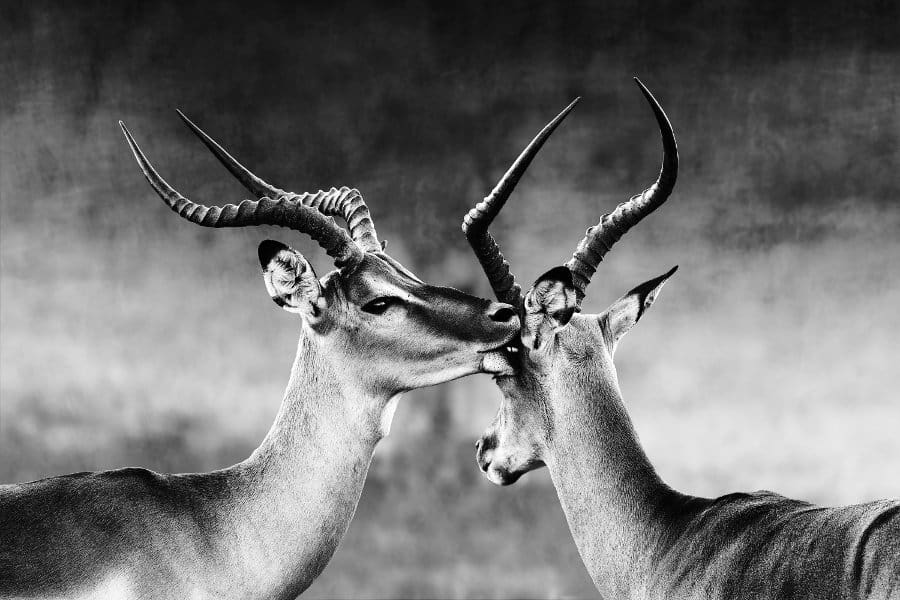
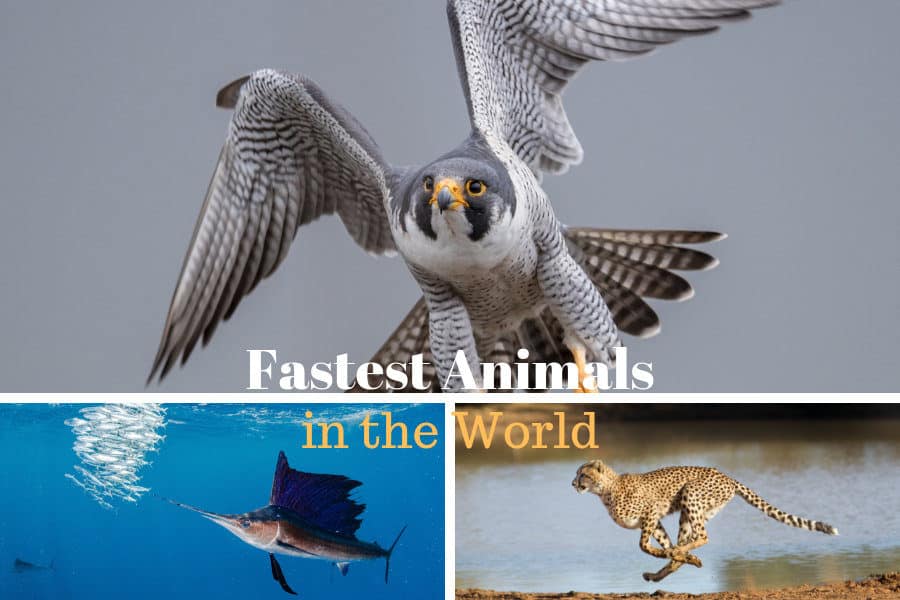
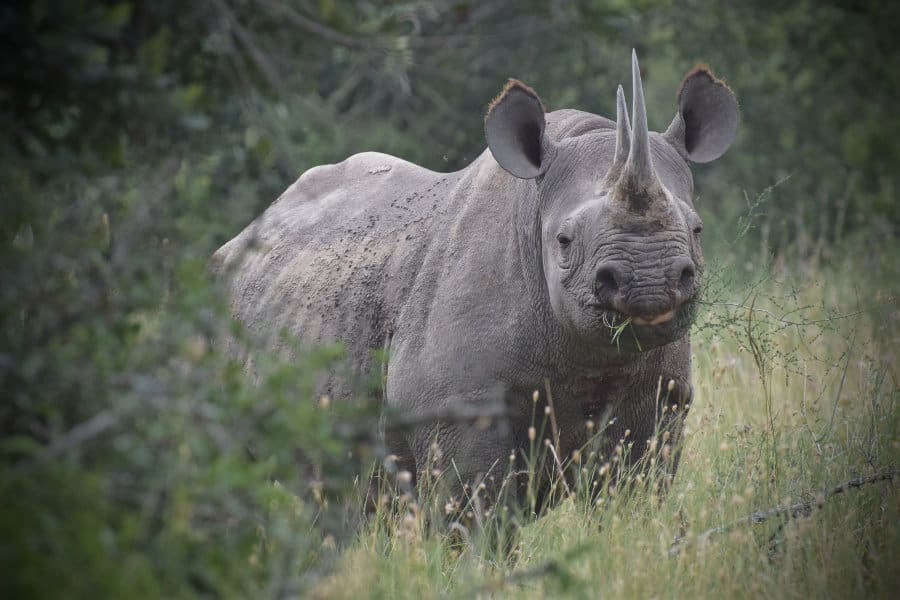
These black and white animals are just awesome, thanks for the info.